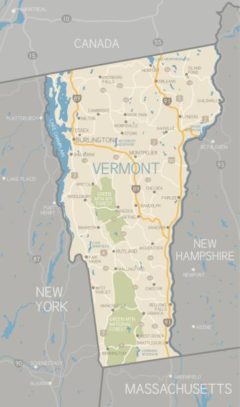A project to build out Vermont’s broadband infrastructure is facing several hurdles to its completion that could affect costs and schedules, The Bond Buyer reported. In his report titled, “Universal Broadband in Vermont: Managing Risks,” Vermont State Auditor Doug Hoffer said that “one of the largest infrastructure projects in state history” to improve broadband networks statewide could stall because federal funding may be exhausted before construction is complete.
In 2020, Vermont lawmakers tapped funds from the Coronavirus Aid, Relief, and Economic Security Act as well as the American Rescue Plan to renew efforts that began during the Obama administration to overhaul broadband systems statewide. Lawmakers since have lined up $350 million for the installation of new fiber systems across the state, $114 million of which has already been doled out by the quasi-governmental Vermont Community Broadband Board (VCBB) as grants to local project managers, called Communications Union Districts (CUDs).
The audit concluded that those federal funds will run dry by the end of 2023, leaving the state facing a temporary funding gap sometime in 2024, as it waits for additional support from the federal Broadband Equity, Access, and Deployment program.
VCBB was created by the Vermont legislature under Act 71 in 2021. The state’s goal under Act 71 is for every Vermont address to have symmetrical 100/100 Mbps service. Vermont has one of the lowest broadband connection rates in the nation, particularly in its rural townships. CUDs are to develop, coordinate, and implement broadband expansion in their respective territories, particularly where existing providers have not provided adequate service (or any service) for residents and businesses. Ten CUDs represent 214 Vermont municipalities that are in varying stages of broadband development.
The amount and availability of new funds is still unknown, raising the specter that the state may have to suspend ongoing work unless another funding stream can be found. Such action could lead to higher project costs and delayed service availability, along with the possible loss of qualified fiber technicians who would seek other work.
Persistent supply chain issues are causing material shortages and higher prices. Any delay is made worse because rates and payment schedules associated with ongoing projects are tied to pre-estimated levels of take rates by paying internet users.
Rather than waiting, the auditor recommended alternative financing options that could hold the state over until federal funds arrive. One option was the creation of a revolving door fund that would distribute state support to municipal project managers to be repaid with federal dollars when they arrive. Other options include reappropriating $30 million from Vermont’s fiscal year 2023 Budget Adjustment Act or seeking a loan from the Northern Borders Regional Commission, a federal-state partnership that distributes grants for economic development in northern Maine, New Hampshire, Vermont, and New York.
The audit also found that efforts to expand broadband in Vermont may be stymied as well by a lack of expertise among the CUDs. Most local project managers had “little or no track record of receiving and administering grant funds” and “activities to date have not always been smooth” because of it, the report said.
“The speed and nature of the undertaking have resulted, at times, in accountability and risk mitigation strategies being developed after dollars are awarded, rather than before,” the report concluded. “If current estimates are correct, the total cost to build a universal broadband network in Vermont will be [as high as] $600-800 million.”




Reader Interactions